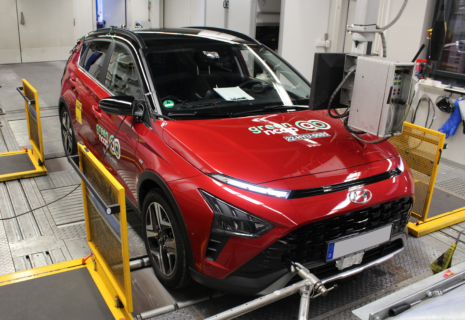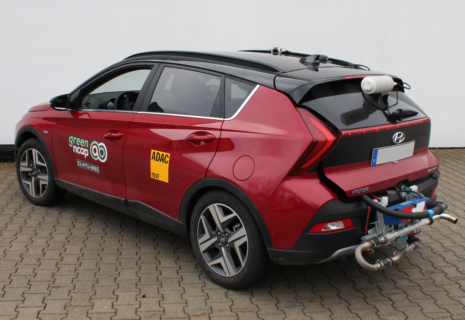Hyundai BAYON 1.0 T-GDI 48V petrol FWD automatic
2022
44%
3.8
10
Clean Air Index
5.4
10
Energy Efficiency Index
4.1
10
Greenhouse Gas Index
| Laboratory Tests | NMHC | NOX | NH3 | CO | PN | |
|---|---|---|---|---|---|---|
| 3.510 | Cold Test | |||||
| 6.610 | Warm Test | |||||
| 0.010 | Highway | |||||
| Cold Ambient Test | Does not qualify for additional robustness testing | |||||
| Road Test | ||||||
| 5.610 | On-Road Drive | |||||
| 1.65 | On-Road Short Trip | |||||
| On-Road Heavy Load | Does not qualify for additional robustness testing | |||||
| On-Road Light Load | Does not qualify for additional robustness testing | |||||
| Congestion | Does not qualify for additional robustness testing | |||||
| Laboratory Tests | Energy | |||
|---|---|---|---|---|
| 6.310 | Cold Test | |||
| 6.510 | Warm Test | |||
| 3.310 | Highway | |||
| Cold Ambient Test | Does not qualify for additional robustness testing | |||
| Consumption | Driving Range | |||
| Average | 6.0l100 km | 685km | ||
| Worst-Case | 7.7l100 km | 519km | ||
| Greenhouse Gases | CO2 | N2O | CH4 | |
|---|---|---|---|---|
| 5.210 | Cold Test | |||
| 5.510 | Warm Test | |||
| 1.810 | Highway | |||
| Cold Ambient Test | Does not qualify for additional robustness testing | |||
Specifications
- Tested Car NLHBR81GGNZ04XXXX
- Publication Date 06 2022
- Vehicle Class Small SUV
- Emissions Class Euro 6d AP
- Tyres 205/55 R17
- Mass 1,194 kg
- Engine Size 998 cc
- Power/Torque 88 kW/200 Nm
- Declared CO2 120 g/km
- Declared Consumption 5.3 l/100 km









































































































































































Our verdict
August 2023: The result of this car been updated. Previously reported Ammonia (NH3) values were incorrect owing to a technical error with the equipment at the test laboratory and a correction has been applied.
The Hyundai BAYON 1.0 T-GDI 48V scores 2½ stars overall despite having a small engine with an even smaller electrical boost by its 48V mild hybrid system. This is not enough to balance out the problems of the three-cylinder engine especially under constant high load. The BAYON displays typical advantages and disadvantages of a petrol engine: well managed NOx emissions and sometimes high CO emissions under high load. The car is equipped with a GPF, yet in all tests it produces particles that are close to exceeding the limits at which positive points are scored.